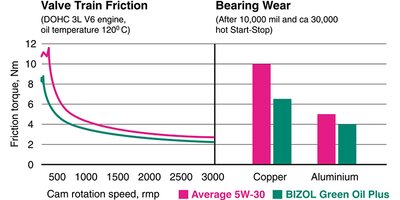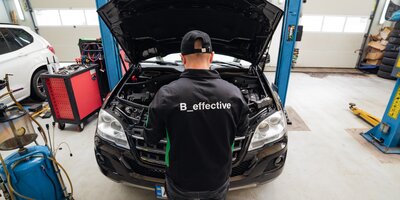TRIPS AND TRICKS FROM THE WORKSHOP – THE UNDERSEAL HACK
Anyone who has tried to get encrusted underseal off car parts will know how tedious and time consuming it can be. Wouldn’t it be great if you could cut that particularly annoying corner and save yourself the arm-aching work and the self-mutilation involved in removing bitumen-based underseal?

If you use rotating wire brushes or abrasives to remove underseal they get clogged up before you get a decent amount off and will damage the material underneath. A heat gun can speed up removal considerably, but heating up bitumen-based products releases fumes and can be messy and risky if you get the parts or bitumen too hot! Some people even resort to using petrol as a solvent, but do you really want to be soaking parts in petrol?
Well, there is a trick that can be used to significantly reduce the amount of effort required to get the result you are looking for. The solution, in both senses of the word, is BIZOL Gasoline Intake Clean+ c36. In the pharmaceutical world it’s what they call ‘off-label use’, put simply, you use a product for something other than is stated on the label; in this case removing bitumen-based underseal.
If you are familiar with the cleaning power of BIZOL Gasoline Intake Clean+ c36 in its ‘on-label’ function, then it shouldn’t really come as a surprise to you. Nonetheless, you will probably still be pleasantly surprised by just how effective it is at softening and shifting bitumen underseal and the speed at which you can work.
But how can I use Gasoline Intake Clean+ to remove underseal? Well, first you need to don a pair of gloves and a pair of goggles, remember safety first! Once you are ready to start work, just spray the parts that are coated in underseal with Gasoline Intake Clean and watch as the underseal softens before your very eyes.
The trick here is to treat a relatively small area because you need to remove the underseal before the solvent evaporates. If you spray too large an area, the solvent will evaporate before you have a chance to remove the underseal.
Now, when you scrape, large amounts come off at once or if the parts only have a relatively thin coating, you can just get a cloth or paper towel and rub the underseal off; it is like magic!
Imagine, not having to put off cleaning parts or parts of a vehicle underbody any more for fear of blisters, getting covered in dirt or scraping your knuckles trying to remove old underseal. Happy days!
If you want to remove underseal from hard-to-reach areas when performing repairs or restoration work, the extension hose really comes into its own, as you can get at areas that are simply inaccessible to heat guns or drills with rotating brushes.
The other way of removing underseal without damaging what is underneath, is ice blasting. Ice blasting, however, requires specialist equipment and only companies with the correct tools can do it, meaning that it is very expensive. Why not try a cheap and straightforward alternative instead?

You might also like

Prof. Dr. Boris Zhmud, Head of R&D, BIZOL Germany

Within the realm of automotive care, few substances are as vital as motor oil, in ensuring the seamless operation of a vehicle's propelling device. It serves as the lifeblood of a motor, ensuring that the intricate machinery operates efficiently and without unnecessary friction. The functions of motor lubricant substance extend far beyond just lubrication, encompassing a range of critical tasks that contribute to the longevity and performance of a propelling mechanism. In this article, we’ll delve into the multifaceted functions of motor oil and explore how it plays a pivotal role in maintaining the health of automotive powerhouses.

The modern marvel of an internal combustion motor powers our vehicles, providing the strength and reliability we rely on for daily transportation. However, just like anything else subjected to constant use, motorized units experience wear and tear over time. Component deterioration can significantly impact performance and longevity. In this article, we will delve into the intricacies of engine wear meaning, explore the various causes behind it, provide actionable tips to reduce and prevent it. Furthermore, we will look at how specialized engine oils, such as BIZOL, play a crucial role in safeguarding your engine’s health. Let’s begin by understanding what engine wear is and the factors that contribute to it.

